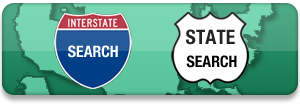We enjoyed one of our last summer weekends on the Oregon Coast at Eel Creek Campground. It was cool and foggy, which meant fall camping conditions for us! We came to this part of the Oregon dunes to go sand boarding with a big group of tweens and teens, so we needed to really think through our meal lists. For all your year-round camping adventures, here are a few camping recipe ideas and tips from one camping family to another:

Camping meal tips:
- Pack separate coolers: You don’t want your main meal ingredients, like frozen meat, sliced veggies, and staples like milk or eggs to get warm, so place these items in a separate cooler from the one you use for ice and drinks. That way, it’s not opened and closed continuously throughout the day.
- Freeze plastic milk jugs instead of bringing blocks of ice: This way, as the ice melts, you have potable drinking water to use, instead of a soggy, leaking cooler. Bonus tip: wrap your headlamp around the milk jug (inwardly) in the evenings for a lantern that will glow brightly!
- Pre-sliced or cut meat into the portions needed for your recipes before you leave home, then freeze them in zip-lock bags. Your meat will gradually thaw, and you’ll save a lot of time and energy once at camp if you don’t have to portion the servings. Choose meats that can pull double duty: for example Johnsonville fully-cooked sausage patties can be used at breakfast, then again in dinner tin foil packets or soups.
- Bring milk that doesn’t need refrigeration: Consider using powered milk or boxes of milk that don’t require staying cold, like almond milk.
- Place all your cooking items into one plastic storage bin: mark it as your ‘kitchen’ bin and keep everything together. For organization at camp, use a hanging shoe organizer to stow spices, utensils, and knives you need to keep out of kids’ reach.
- Be sure to safely store food at camp: Use a bear locker or bin if provided by the campground, or hang food from a tree in a sleeping bag stuff sack if you’re in bear country. If not, store food in a locked car at night to prevent smaller critters from snacking.
- Have a separate lunch bag that kids can dig into on their own. Keeping lunch and snack items apart from your dinner ingredients ensures foods don’t get eaten up early when they’re supposed to be part of recipes! Consider bulk foods for snacks to cut down on packaging and trash, such as trail mix, dried fruit, and nuts from bulk bins.
Fall camping recipe ideas:
Autumn is a great time to camp…the crowds have left your favorite campgrounds, and the weather stays nice in most areas long after Labor Day. Fall is the time for savory, warm camping meals between traditional BBQing sessions. Here are a few fall camping recipe ideas:

- Egg scramble: Start with a layer of hash browns on your griddle (bring frozen hash brown patties for ease), then scramble with eggs, sausage, cheese, and any fresh veggies you’ve brought along. Serve on tortillas for breakfast burritos that reduce the need for plates…and dish duty.
- Dinner tin foil packets: Anything goes in these fun dinner packets! Start with a square of tin foil for each person. Create a buffet of chopped veggies and sliced meats (pre-cooked is best for fast cook times), plus diced potato and any spices you want to add. Each person creates a customized packet, then places it over the grill (allow coals to get hot first…not over a new fire). Cook until potatoes are soft…this may require some checking by parents.
- Potato soup or chili: Use the burner on your camp stove to make a big batch of easy-to-make potato soup or chili (or one of each!). We like to use soup starters that come in powder mixes when we camp, then we add cooked meat or veggies to the mix ourselves. Sausage, diced chicken, fresh corn, or red bell pepper work great in the soup, and any meat or beans can be added to chili mixes. When the weather is turning cool, it’s great to have soup on the camp stove! Bring a pan of cornbread from home to serve alongside!
- Hot dogs over the fire…with extras: Have kids gather sticks and roast hot dogs over the fire, then add some extras. Remember that chili you served the night before? Reserve some for your hot dog night! Add diced onion (get it pre-packaged, or dice at home), avocado, shredded cheese, or roasted veggies to the mix.
Do you have a top fall camping recipe idea? A family favorite? Share in the comments! Note: comments submitted may be displayed on other websites owned by the sponsoring brand.
This is a sponsored conversation written by me on behalf of Johnsonville. The opinions and text are all mine.
var ts=document.getElementById(‘ti-pixel-tracker’); var axel = Math.random() + “”; var num = axel * 1000000000000000000; var ti=document.createElement(“img”); ti.style.display=”none”; ti.src=”https://tracking.tapinfluence.com/trk/Zl0qD/FLIrV/p.png?p=NaKx5″ + String.fromCharCode(38) + “i=xgp6m” + String.fromCharCode(38) + “ord=”+ num + String.fromCharCode(38) + “s=” + encodeURIComponent(document.referrer); ts.parentNode.replaceChild(ti,ts); new TAP.CogFrame(‘/v1/cogs/7e0c5b04-4507-11e6-89bd-22000a66c666/comments’).drop({“program_id”:”7e08c890-4507-11e6-89bd-22000a66c666″,”post_id”:”5acddd30-6577-11e6-b161-22000a7d00a4″,”host”:”api.tapinfluence.com”,”apiHost”:”api.tapinfluence.com”,”sort_order”:”desc”,”limit”:”20″,”offset”:”0″,”sort_by”:”created_at”,”protocol”:”https://”});



































